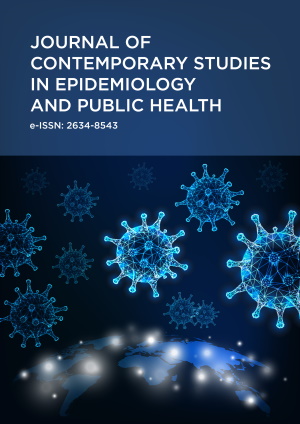Abstract
Background: The emergence and spread of multidrug-resistant (MDR) bacteria have become a major threat to public and environmental health because they limit treatment options against infections. Fomites have been implicated in the spread of pathogenic and resistant bacteria, making them an important source of disease. This study was carried out to determine the frequency and characteristics of resistant bacteria linked with environmental fomites in a tertiary institution in Nigeria as part of global efforts to provide information to contain the spread of antimicrobial resistance.
Methods: 300 swab samples, determined by factorial design, were aseptically collected from 10 fomites in 10 locations in three different facilities at Obafemi Awolowo University, Nigeria, and transported to the laboratory for processing. The isolates were identified by standard procedure and the MicrobactTM identification kit. The susceptibility profile of the isolates was determined using Kirby-Bauer disc diffusion technique. MDR bacteria were examined for the presence of plasmids using the alkali lysis method, and plasmid-mediated quinolone resistance, extended-spectrum beta-lactamase, and methicillin resistance genes by polymerase chain reaction.
Results: 89 diverse bacteria were isolated from fomites in the study environment. Staphylococcus aureus (49.4%) predominated among the bacteria, followed by Staphylococcus saprophyticus (10.1%), Providencia stuartti (5.6%), Proteus vulgaris (4.5%), and Acinetobacter baumannii (3.4%). The isolates were commonly (84%-100%) resistant to ceftazidime, cefuroxime, and augmentin, while the least (8%-12.5%) resistance was to ciprofloxacin, amikacin, meropenem, and streptomycin. 58 (65.2%) isolates were MDR, and the majority (27.6%) were isolated from floors. 47 (81%) MDR isolates harbored plasmids, with their molecular weights between 2.697 kbp and 4.011 kbp. mecA, TEM, and OqXAB resistance genes were detected in S. aureus, P. stuarttii, Pseudomonas sp, and K. oxytoca.
Conclusions: This study has shown that fomites in the sampled locations are potential reservoirs for MDR bacteria, and may serve as sources of their transmission, thereby posing a threat to public health. Therefore, appropriate sanitary measures are required to prevent any potential cross-contamination. In addition, it is imperative to regularly survey environments for bacterial contamination to increase community awareness and education regarding hygiene standards.
License
This is an open access article distributed under the Creative Commons Attribution License which permits unrestricted use, distribution, and reproduction in any medium, provided the original work is properly cited.
Article Type: Original Article
J CONTEMP STUD EPIDEMIOL PUBLIC HEALTH, Volume 4, Issue 2, 2023, Article No: ep23006
https://doi.org/10.29333/jconseph/13132
Publication date: 01 Apr 2023
Online publication date: 29 Mar 2023
Article Views: 2244
Article Downloads: 1762
Open Access References How to cite this article
 Full Text (PDF)
Full Text (PDF)